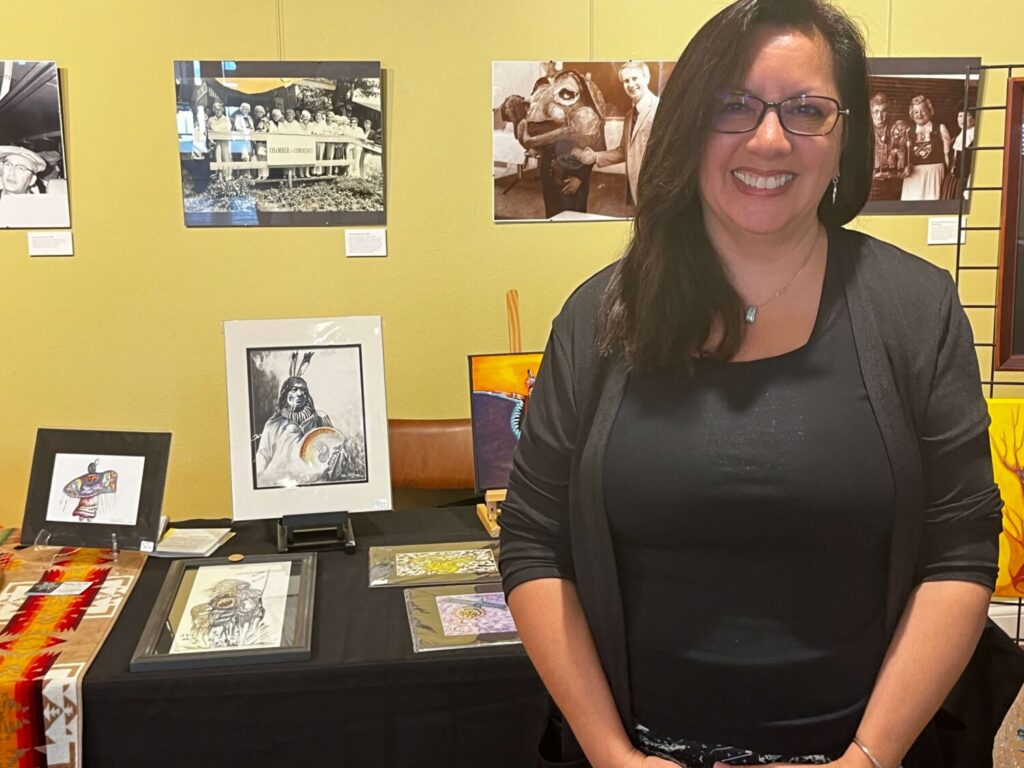We’re revisiting some of our favorite stories of the year. This one was originally published July 20.
 I picked this one because I appreciate all the individual and groups of artists I have gotten the opportunity to talk to, but I think it is especially important to highlight Indigenous culture, history, and life given that our dominant culture is strategically designed to ignore, erase, or destroy those precious things, and Terri is a wonderful woman playing her part in fighting that.
I picked this one because I appreciate all the individual and groups of artists I have gotten the opportunity to talk to, but I think it is especially important to highlight Indigenous culture, history, and life given that our dominant culture is strategically designed to ignore, erase, or destroy those precious things, and Terri is a wonderful woman playing her part in fighting that. Wisconsin is no stranger to the presence of deep, yet often under-discussed Native American history that ties in so closely with the state. While much of the visual representation of Native history is most immediately seen in the geography of Wisconsin, many artists are pushing for more visibility and vocality around Native history and culture through their own creations.
Terri O’Connor is one such local artist. While Terri now lives in Poynette, Wisconsin, she has been around the Madison area since her early 20s. O’Connor’s passion for art started long before she found her way to Madison as art was second nature at home.
“I started my art way back when I was young,” O’Connor told Madison365. “I just always dabbled in the art scene a bit, slowly working with the tribe on quite a few little projects that they had. My dad was an artist, so he had paintings that he had done in the house like some horses, I remember. I also had my mom’s brother who was an artist, so he did a lot of beautiful artwork, too, as a painter, as well. I saw that and was always interested in art.”
O’Connor grew up surrounded not just by art, but by Native American art and culture specifically that fueled a passion for learning more. Being raised on the Stockbridge-Munsee Band of Mohicans Reservation, O’Connor was exposed to culture and connections within the tribe that eventually led to working in smaller ways to provide artistic needs for her community.
“Going to the Pow-Wows in the summertime was a huge influence on me,” said O’Connor. “I just loved the character. I’m a people person when I draw. I love looking at faces and I was intrigued with the history. I like old photos, so working at the museum, I got to see some of the history. It just really influenced me on the culture. The tradition of Native Americans’ respect for their elders, and the Pow-Wows as gatherings and always giving thanks. It’s basically a gathering to get together to see family and see people that you haven’t seen in a while.”
Connecting with people gave O’Connor the opportunity needed to practice her art in ways that may not be immediately thought of such as designing badges for the tribal Natural Resources Department, and logo design for businesses out of the tribe, such as Tribal Sun Soap. However, the most inspiring things for O’Connor’s artwork may just be the joining together of people in ways that uplift and support the community.
“I did a piece honoring women called ‘The Gatherer,’ O’Connor said. “A lot of the women in our culture were gatherers of not only the food, but they were a great support for the community. I like to do a lot of my art in honor of men, women, and children, because it’s all part of us. We’re all part of that community. We all make a difference in all the things that we do and contribute to help each other. I think that’s true in all cultures.”

(Photo by Robert Chappell.)
One of the communities O’Connor has found herself in is with other local Native American artists who frequently do shows around the area such as the Native Art Marketplace that took place early last month in Mt. Horeb. It is in spaces such as these that she says people may be surprised to find art and culture in a variety of ways including storytelling and carvings as well.
“There’s such a diversity with some of the artwork in Native culture,” expressed O’Connor. “You’ve got basketmakers and the beadwork that is amazing. There’s so many influential pieces of artwork that maybe a lot of people don’t even realize are out there.”
As time moves forward, many Native cultural traditions and ways of understanding are lost both to the cycle of life, but also to silence. As artists and community members such as O’Connor push to make their history, culture, and passion visible, it takes the community to respond and invest their interest and support in remembering the deep and beautiful Native history that is crucial to maintain for future generations.
“We want to show people our culture and our passion for it while always having appreciation for everything that’s around us. We are a part of this earth, and there’s so many beautiful things of this earth for us to express and show in our art,” O’Connor said, praising the perseverance and continued collective effort of local artists, especially Native artists.
“They’re multitalented and they need to be seen and heard because it’s part of our lives. It’s us, it’s who we are, and it’s great that it’s being recognized that we are artists. We are actual artists working out there, and doing it because we love it.”




























